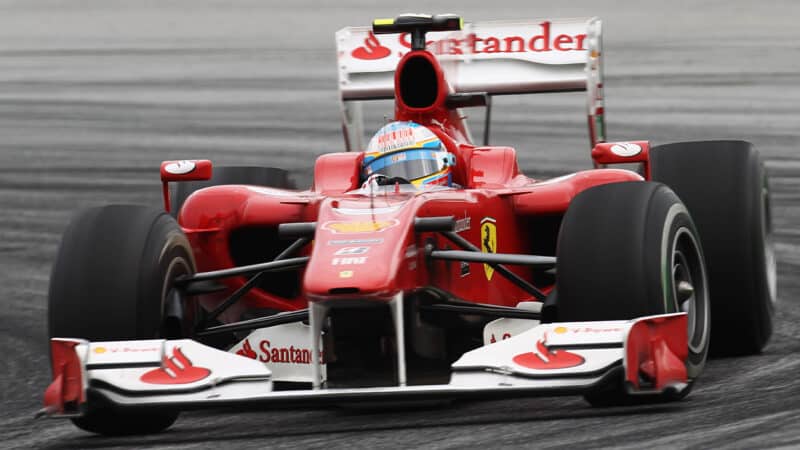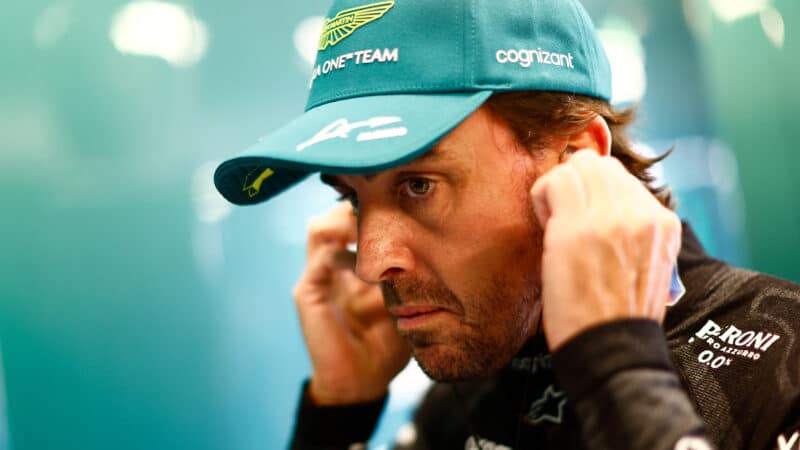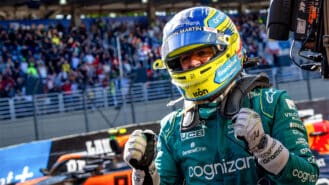We’d seen something similar in his first season with the team, in 2003, at Silverstone when the engine electronics went haywire, giving him what should have been an undriveable map and with the traction control no longer working. He’d improvised a tune from it effortlessly.
In Sepang one year the gearshift mechanism of his Ferrari had gone rogue, so that to get a downshift he needed to make an upshift first. In tricky track conditions he was flying and from in car you could see how he was simply incorporating the novel gearchange technique into his charge.
He is better than any driver on the grid at improvising. He can drive in whatever way the car demands. Watching him in into Tabac at Monaco one year, his Ferrari didn’t have much of a front end and every lap he’d brake heavily, get some turn into the car, then come off the brakes slightly to complete the direction change. The co-ordination of brakes and steering was extraordinary and the same every lap. He was tricking the car into doing something it didn’t think it could do. He spent much of 2014 doing something similar with the lamentable Ferrari SF-14T, leaving team-mate Kimi Räikkönen bewildered and totally out-performed.
Räikkönen was the absolute opposite in his traits; devastatingly fast if the car behaved in just the way he needed it to, with lots of direction change for not much steering input. But not up for driving around any car which didn’t behave ‘correctly’.

Having to change up when he wanted to change down had minimal effect on Alonso’s pace at Sepang in 2010
Getty Images
Put Alonso into a perfectly balanced car for a qualifying lap and he’ll be quick, obviously. But not extraordinarily so. He has an incredibly wide peak, but a somewhat rounded one. He has rarely delivered a lap in a top car which has left everyone open-mouthed. But watch him as the car traits change as the fuel load comes down and the tyres degrade and see how relentlessly consistent he is. See him adapt a totally different driving style when given the challenge of getting the tyres to do a longer stint than they seem capable of. He’s a magician with the tyres.
Notice how often he doesn’t find as much time from Q2 to Q3 as the others. “It’s because I’ve already found it,” he will say, mischievously. “I got to the limit sooner than the others.” Partly, yes.
But he has also said, “I am not the fastest in a qualifying lap. I am not the fastest in the rain. I am not the best in many of the areas. But I think I am 99% in all of them – and that gives me an advantage very often.”
These traits have been evident from his earliest days in F1, but it’s always interesting when he separates the self-mythologising from the shrewd self-assessment.


